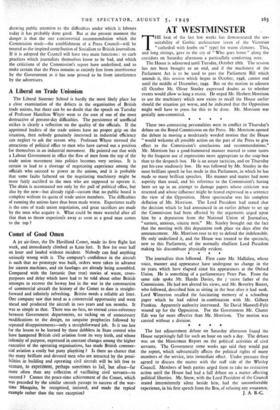Comet of Good Omen
A jet air-liner, the De Havilland Comet, made its first flight last week, and immediately climbed to 8,000 feet. It flew for over half an hour and landed without incident. Nobody can find anything seriously wrong with it. The company's confidence in the aircraft is such that no prototype was built, orders were taken in advance for sixteen machines, and six fuselages are already being assembled. Compared with the fantastic (but true) stories of waste, cross- purposes and delay which have had to be told about other British attempts to recover the leeway lost in the war in the construction of commercial aircraft the history of the Comet to date is straight- forward and infinitely refreshing. Britain needs a reliable air liner. One company saw that need as a commercial opportunity and went ahead and produced the aircraft in two years and ten months. It was as simple as that. There was no fuss, no eternal cross-reference between Government departments, no tacking on of unnecessary modifications to the design, no sanguine prophecies followed by repeated disappointments—only a straightforward job. Is it too late for the lesson to be learned by those dabblers in State control who have hampered British civil aviation from its very birth, and whose infirmity of purpose, expressed in constant changes among the higher executive of the operating organisations, has made British commer- cial aviation a costly but puny plaything ? Is there no chance that the many brilliant and devoted men who are attracted by the possi- bilities in building and operating civil aircraft will be left free to venture, to experiment, perhaps sometimes to fail, but often—far more often than any collection of vacillating civil servants—to succeed ? Cannot the peace-time achievement of the Comet, which was preceded by the similar smooth passage to success of the war- time Mosquito, be recognised, imitated, and made the typical example rather than the rare exception?


































 Previous page
Previous page